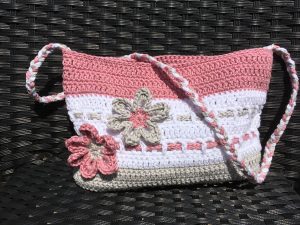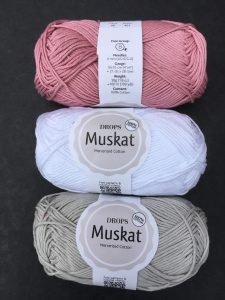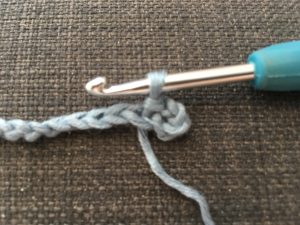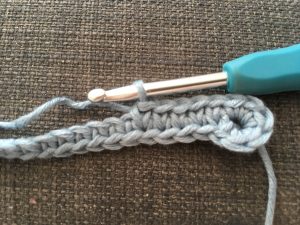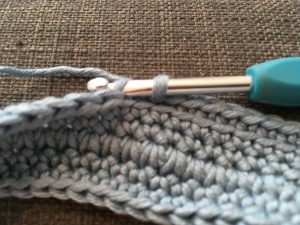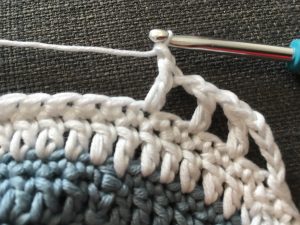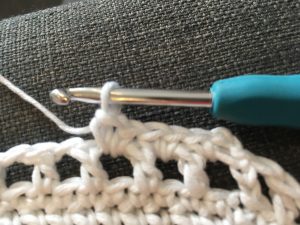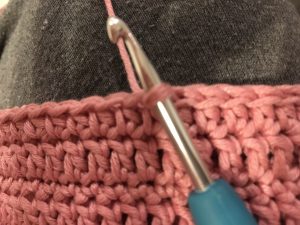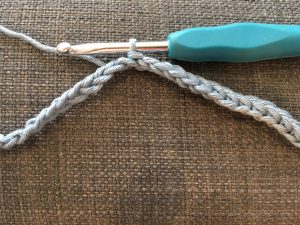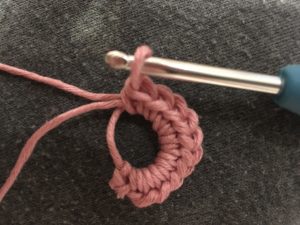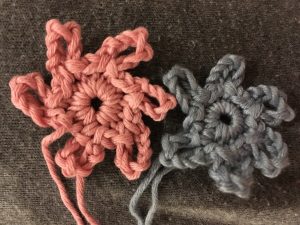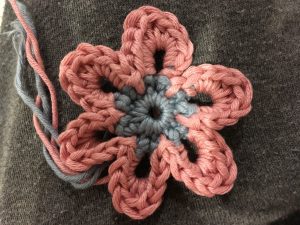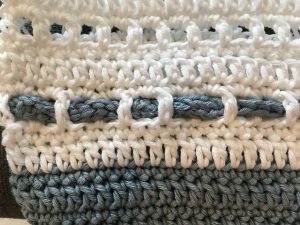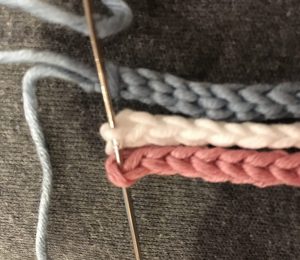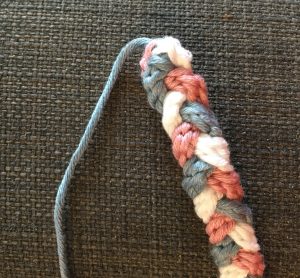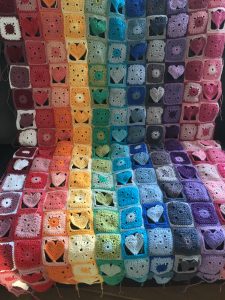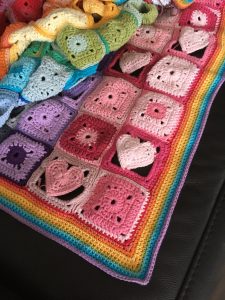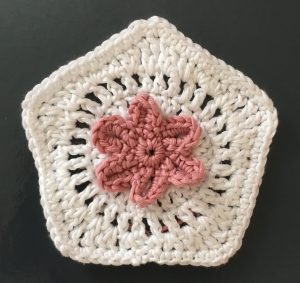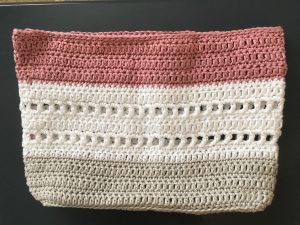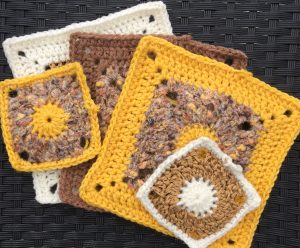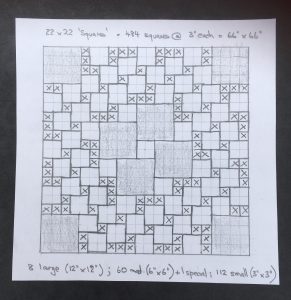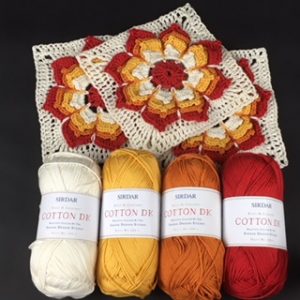Here is a quick make for you, a heart charm to decorate a bag or belt. You can use any motif or charm to make these. I have chosen hearts and music as those are two of my favourite themes.
The elements I have used are cheap to source and you can include recycled items, buttons or ribbon. I have lots of offcuts and remnants from other projects and these charms are great for using those.
I bought a job lot of key chain hooks on Amazon. These were very cheap (£7 for 50 at the time of purchase) and offer the flexibility of using either the small loop on the carabiner clip or using a larger ring which comes with the clip. I also bought a pack of musical charms (£4 for 24 at time of purchase).
Design your Charm
The fun bit is in deciding which crochet motifs and colours to use when putting the charm together. I called this quick make – Heart Charm as it is close to valentines day. My finished charm has pink hearts based on my heart pattern which you can get here. I made one small and one medium sized heart in pink. You don’t have to stick with the heart theme. There are lots of crochet motif patterns available. I have a board for these on Pinterest.
Consider the yarn carefully. These charms might rub against the bag or clothing. If you use a fluffy yarn it might start to look worn very quickly. I chose to use mercerised cotton as it is hardwearing and doesn’t bobble. I also happened to have some oddments in my stash!
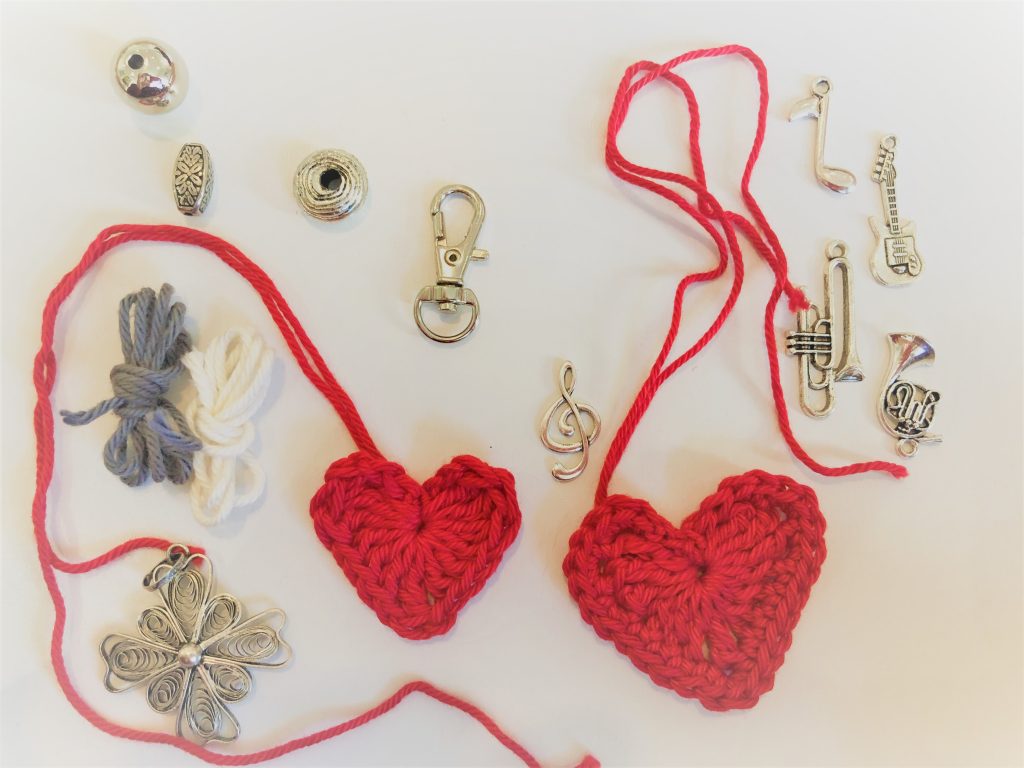
If crochet isn’t your thing you could make little hearts out of fabric, stuffing them to make them look full. If sewing isn’t your thing you could cut shapes out of felt. Felt is wonderful for craft as it doesn’t fray so does not require stitching.
You can attach the elements of your charm to the ring or clip direct. I hung my charms by plaiting the cotton through the ring on the clip – hiding the ends as neatly as I could. Making the ends of the plait into tassels is a good way of finishing off. This makes the ends secure without stitching. You could glue bits together – especially if you are using felt. However, do consider how hardwearing your charm needs to be. If it is going to be on a belt or heavily used bag it will need pretty robust.
Making your Charm
First, make your motif and remember to leave plenty of thread or yarn so that you can use it to join the motif to the clip. To attach with a plait, take one of the ends of the cotton used to make the heart. Thread the end through the ring of the clip and double the thread back. Position the heart so that the length of thread between clip and heart is slightly longer than the finished length you would like. Add two other threads through the ring of the clip. Each thread should be folded over so you have six coming from the clip.
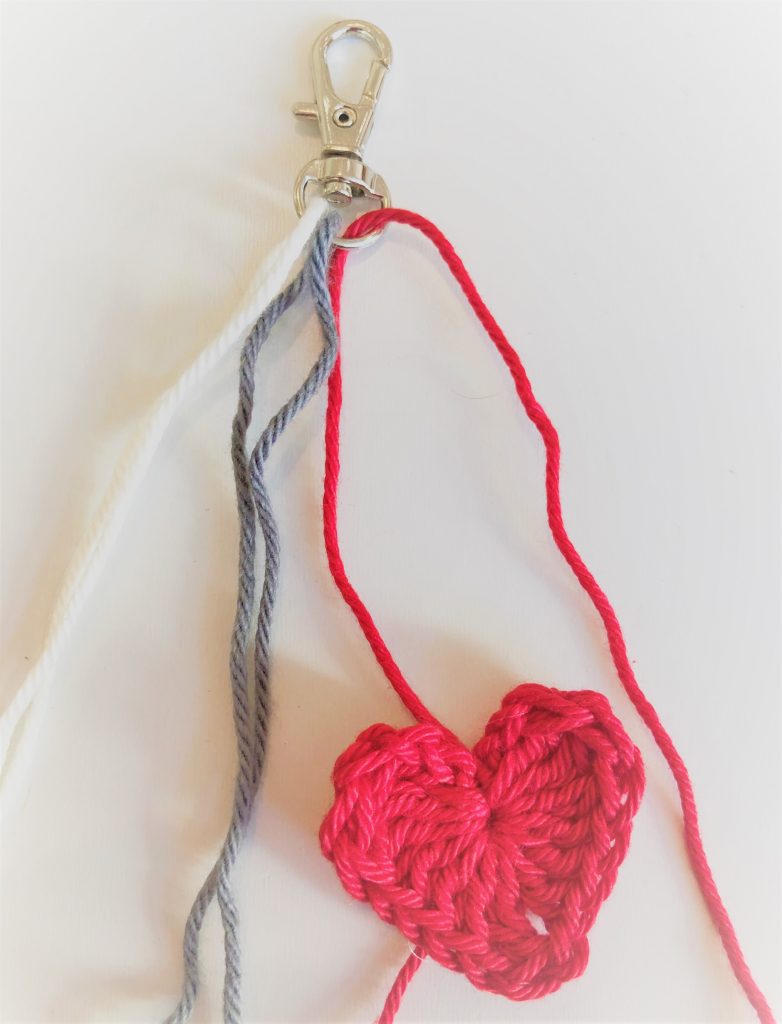
Pair the threads up and plait!
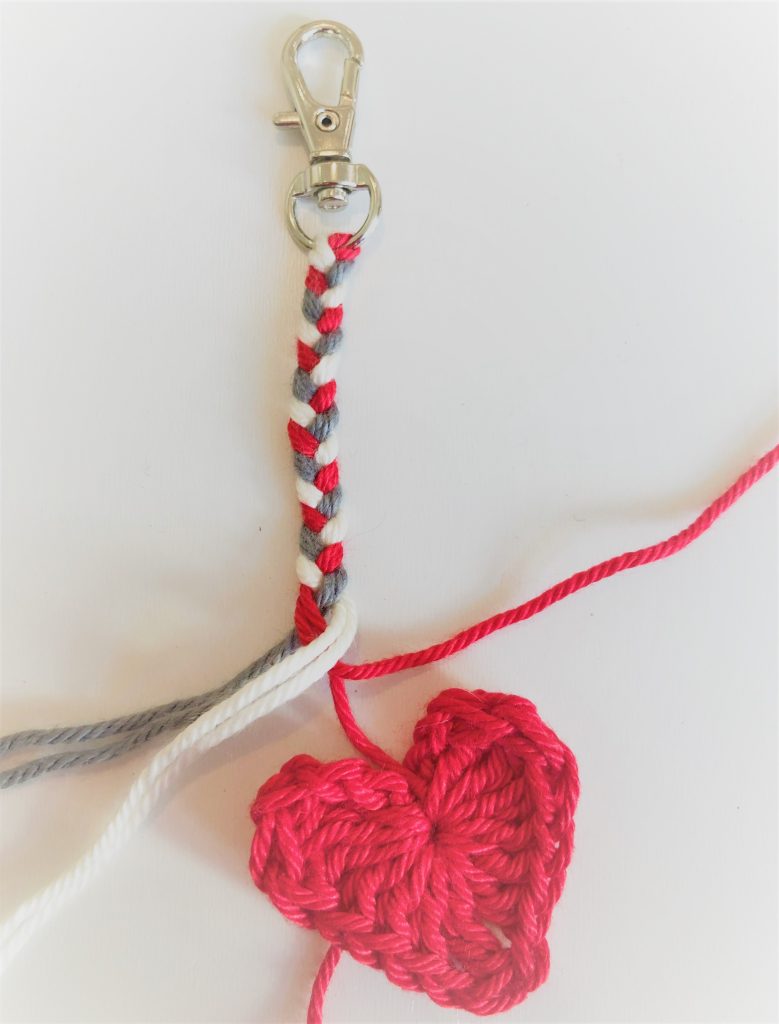
When you get to the heart, tie a knot in the threads to secure. You can also finish off by binding one of the threads around the others if you prefer. Repeat this method with other motifs. I added some beads as they provide weight which helps the charm hang well.
The only limit to these charms is your own imagination. You could add buttons or bows. You could make pompoms or tassels to add. Make them for your friends or as party favours 🙂
Here is a picture of one of my finished charms. I will put these up for sale on my Etsy store but I expect people would rather make their own than buy mine!
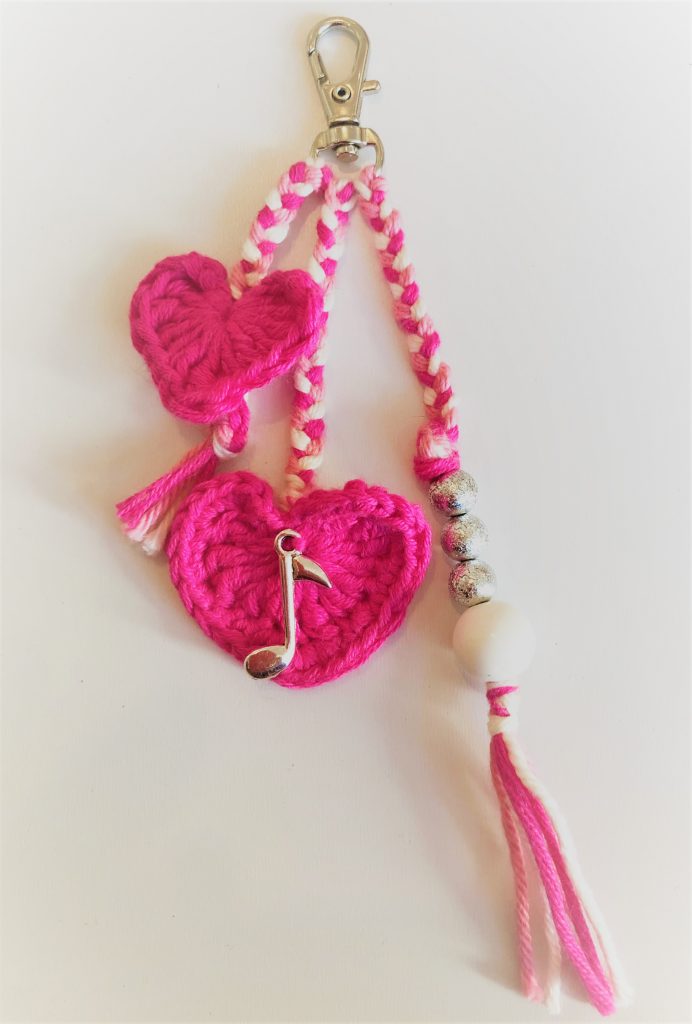
Happy crafting!
Annie 🙂
